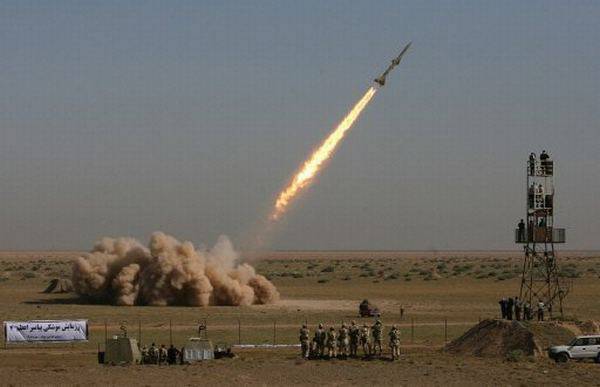Iran is developing its own air defense system, an analogue of the C-300

In recent years, the importance of air defense has shown itself particularly vividly. Opponents of NATO troops, settled in "unreliable countries", could not give a significant rebuff aviation USA and its friendly states. As a result, in both Afghanistan and Iraq, the terrorists were forced to completely abandon the serious battles and switch to guerrilla tactics.
The recent events in Libya also confirmed the need for a serious air defense system. The Libyan army, not the weakest on the continent, was not able to provide serious resistance to NATO aircraft and, as a result, suffered serious losses in ground equipment.
As you know, it is best to learn from the mistakes of others: you can avoid unpleasant consequences and gain time. This is another country - Iran - began to emphasize its air defense. Condemning statements about the Iranian nuclear program have been heard for a long time, everyone is used to them. Yes, and talk about the lack of democracy in this country, as in any other, became the basis for numerous anecdotes. But no one can rule out the possibility of Iran getting on a par with Iraq or Afghanistan, where the "introduction" of democratic foundations by military means has already taken place.
Back in 2007, Iran completed negotiations with Russia and signed a contract for the supply of C-300 anti-aircraft missile systems. The choice of the Islamic Republic is clear - C-300 has all the necessary capabilities for solving the tasks of defense of objects from air attack. However, the Russian air defense system in Iran did not fall. Russia was forced to refuse deliveries due to a UN Security Council resolution. Iran did not make such a turn, and he filed a lawsuit with the International Court of Justice, but so far the proceedings are not over.
Almost immediately after the Security Council’s resolution and the breach of contract that followed, Iran began developing its own anti-aircraft missile system. Understandably, the court case is not fast, and the clouds over the country can thicken at any time.
At the beginning of 2010, Iran announced the start of work on its own air defense system, which will be able to compete with the Russian C-300, and surpass it in a number of indicators. In the fall of the same year, a new Shalamcheh (“Shalamcha”) missile was sent for testing.
As a launcher was selected machine, created on the basis of the US SAM MIM-23 Hawk. The Iranian Hawk was named Mersad. The first copies of the car were made in the middle of last year and at the same time their mass production began.
For security reasons, Iran did not disclose the details of the new rocket. The world public learned only about its medium range (probably, up to 150-250 km) and flight speed - up to 3500 km / h. Also, several photographs were published, from which it followed that the Shalamcha looks almost indistinguishable from the older Shahin Iranian missiles and from their prototype of the American Hawk.
When the first news of Shalamcheh and loud statements about competition with C-300 appeared, Russian experts immediately called them a bluff. They substantiated their statements by the fact that it is impossible to create something modern, let alone promising, on the basis of the American 50 complex. A dramatic improvement in performance requires major changes to the whole complex, including external ones.
The Iranian constructors did not listen to their Russian colleagues and continued to test "Shalamchi".
In early September, 2011, a solemn ceremony of handing over the first Shalamcheh missiles to the troops took place at the military base of Khatam al-Anbiya. Commenting on the adoption of a new missile, the Iranian Defense Minister Ahmad Vahidi made a loud statement: "Shalamcha" can not only detect and attack many types of targets, but also do all this in the conditions of electronic countermeasures of the enemy. Also, finally, the technical data of the rocket became known. With a mass of about 650 kg, it accelerates to a speed that is 2,7 times the speed of sound, and is capable of hitting targets at a distance of up to 40-50 km. The height at which a rocket can attack targets is from 60 meters to 18 km.
Not the best data, but the fact of the creation of the rocket speaks of Iran’s ability to produce weapons on its own. In addition, on the published photos of the rocket, it can be seen that the radar with a phased antenna array is being installed on it, which also indicates the development of Iranian instrument making.
Nevertheless, "Shalamcha" is a deep modernization of the old MIM-23 rocket, and, therefore, cannot compete on equal terms with modern models. The Bavar-373 air defense system, which is still at the design stage, will have to cope with this task. There is less information on this complex than on Shalamche, but Tehran has already stated that all the shortcomings and problems of C-300 will be taken into account and will not fall into Bavar-373. When the new complex at least comes to the test - is unknown.
Information